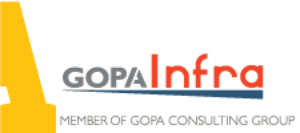Introduction
On this page, a brief introduction to New Technology and Innovation is presented. Gopa Infra bases its approach on current trends and applies it to its Remote Management Monitoring and Verification (RMMS) approach for the execution of infrastructure projects for its clients.
Definition
Any set of productive techniques which offers a significant improvement (whether measured in terms of increased output or savings in costs) over the established technology for a given process in a specific historical context. Defined thus, what is seen as new’ is obviously subject to continual redefinition, as successive changes in technology are undertaken.
Source:
Encyclopedia
Technology today is evolving at such a rapid pace, enabling faster change and progress, causing an acceleration of the rate of change, until eventually it will become exponential. However, it is not only technology trends and top technologies that are evolving, a lot more has changed this year due to the outbreak of COVID-19 making IT professionals realize that their role will not stay the same in the contactless world tomorrow. And an IT professional in 2020-21 will constantly be learning, unlearning and relearning (out of necessity if not desire).
What does this mean for you? It means staying current with new technology trends. And it means keeping your eyes on the future to know which skills you’ll need to know to secure a safe job tomorrow and even learn how to get there. All bows to the worldwide pandemic, most of the global IT population is sitting back, working from home. And if you wish to make the most of your time at home, here are top 10 new technology trends you should watch for and make an attempt at in 2021, and possibly secure one of the jobs that will be created by these new technology trends.
Source:
Technology Trends

General Trends

Project Remote Management Information System (PRMIS)

The international development and humanitarian community are currently experiencing two significant trends: on the one hand site the localization of aid, and on the other side, the increase of remote management. Localization involves the increased reliance on national M&E experts instead of sending international staff into the field, which aligns with remote management.
Remote monitoring implies the conducting of activities without consultants’ physical presence to implement, monitor, supervise or verify. The emergence of these tendencies mainly occurs due to the high increase of construction/reconstruction assistance and aid delivery in volatile environments.
Conflicts tend to be more violent and hostile, with the result that international development and humanitarian actors have to weigh up which risks to take concerning staff security. One of the main challenges arising in this context is ensuring the adequate monitoring and accountability of the remotely implemented project as the regularity of field visits is reduced.
All activities in Remote Management are linked and complement each other.
Participation, whereby needs and problems can be correctly identified from different viewpoints in an atmosphere of interaction and dialogue with the clients. In this way, convincing proposals and procedures which are acceptable to all partners concerned can be elaborated, building on existing strengths, motivation, and initiative;
Target group orientation, whereby the needs and constraints of the beneficiaries will be considered in a culturally sensitive way;
Capacity building and knowledge transfer through sharing of experiences and views on M&E and Construction Audits, and the active involvement of the clients;
Cost-effectiveness must be ensured; the ongoing running costs must be in the financial capacity of the clients;
Synergies with ongoing projects and related M&E processes.
Considerations of cost efficiency and cost-effectiveness will be an integral part of each consultancy component. The team will assess the short and long-term financial implications of proposals for each activity and, where applicable, include relevant recommendations for prudent budgetary control and financial management. The training of staff in operating and maintain the cost-effective PRMIS is critical to ensure handover of the PRMIS on project closure.

